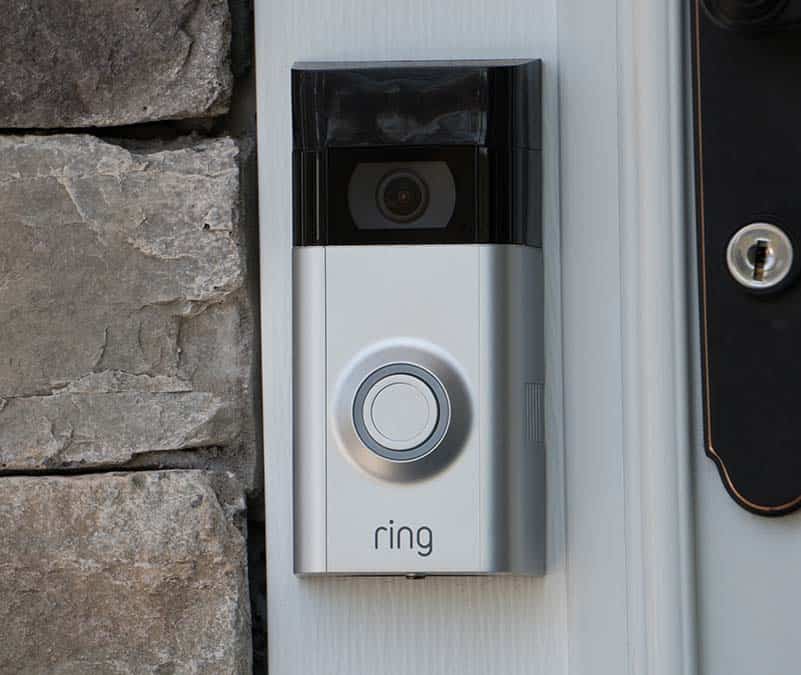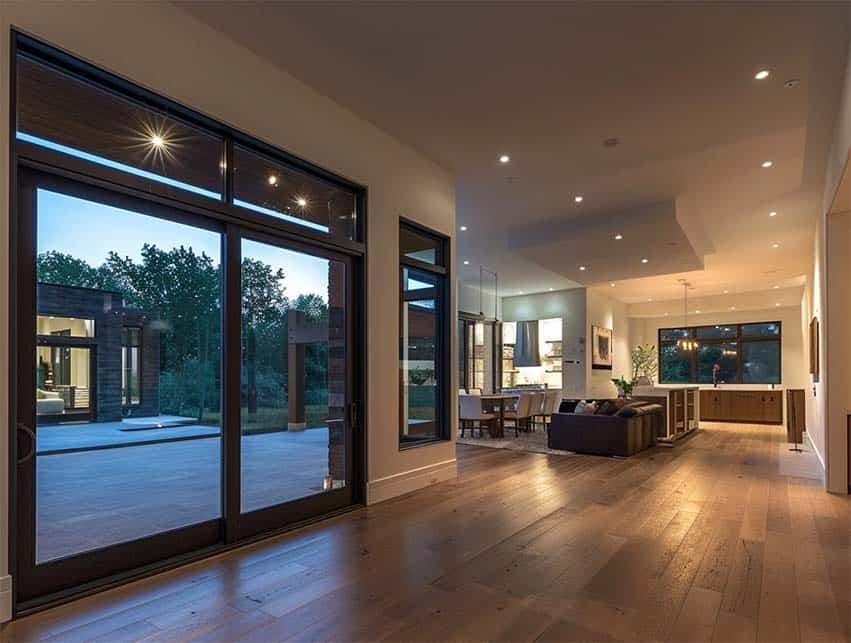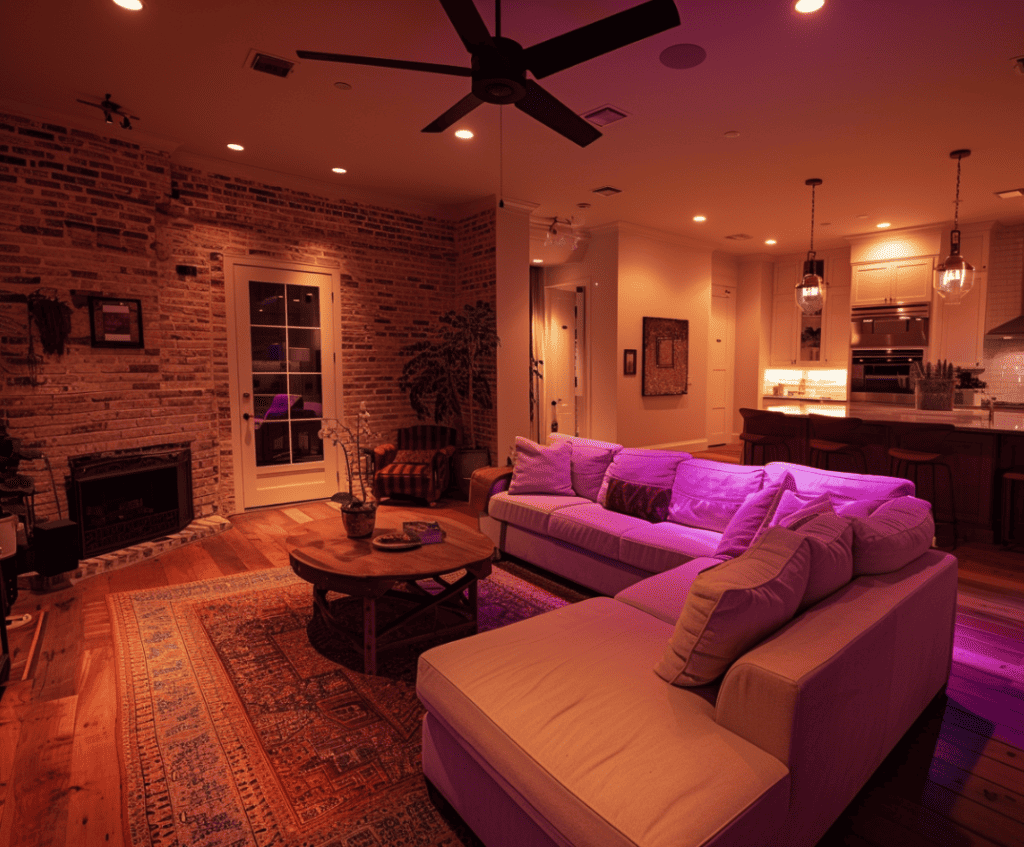Low Voltage Electrical Installations: 20 Examples

Low Voltage Systems Found in Homes in San Antonio
As licensed electricians in San Antonio, we often received calls to perform low voltage electrical installations in homes. There is a degree of confusion about what is a low-voltage system, and this post clears this up and gives many examples in the context of a home.
What is a low voltage electrical system in a nutshell?
Low voltage electrical installations refer to electrical systems and components that operate at voltages significantly lower than the standard AC voltage used for power distribution in homes and businesses.
In many countries, the voltage typically ranges from 100V to 240V. In the United States, the standard mains voltage for residential properties is 120 volts (V) for single-phase electrical outlets and lighting circuits. For larger appliances such as electric stoves, clothes dryers, and central air conditioning units, a 240 volts (V) single-phase supply is typically used.
In contrast, low voltage systems usually operate at voltages below this range, typically at voltages below 50V AC or 120V DC.
Where are they used?
Examples of low voltage systems and their purpose
For each of these 20 examples, we describe what the installation does, why it could be better to hire a professional electrician to do the job, what type of critical issues can crop up during and after installation (when done incorrectly), and what it typically takes a licensed electrician to do the job from start to finish.
Keep in mind that these timings are approximate ranges. Your electrician will have their own timing charts, and will quote accordingly.
Doorbell Systems
- Purpose: To notify homeowners of visitors. Due to security concerns, many doorbell systems now feature a camera and a microphone/loudspeaker assembly that enable homeowners to identify people ringing at the door without having to go open the door.
- Why use a licensed electrician: Ensure proper voltage, safe installation, and integration with other home systems.
- Critical issues: Incorrect wiring can lead to malfunction or electrical hazards.
- Time to install: 1-2 hours.
Thermostat
- Purpose: Control heating and cooling systems.
- Why use a licensed electrician: Ensure proper connections and avoid damage to HVAC systems. Many HVAC companies install thermostats themselves. Their HVAC technicians are usually well trained in the requirements of these devices. However, not all HVAC companies use the NEST thermostat, and electricians are often well versed in the NEST technology.
- Critical issues: Incorrect wiring can damage HVAC systems or cause inefficient operation.
- Time to install: 1-3 hours.
Home Security Systems
- Purpose: Provide security through alarms, cameras, and sensors.
- Why use a licensed electrician: Complex wiring, integration with other systems, and ensuring no false alarms. Also, security companies install these systems but they typically put homeowners under a 24 month contract. Using an electrician to do the work avoids this inconvenience. Sensors are a class of devices in their own. They are typically found on windows to alert homeowners of a breach, but they should also be placed around the perimeter of a house to ensure better security. Professional electricians are often very knowledgeable in this line of work.
- Critical issues: Incorrect installation can lead to system failures or false alarms.
- Time to install: 4-6 hours, depending on the complexity of the system.
Home Audio Systems
- Purpose: Distributed audio throughout the home. Wired audio systems have gradually been replaced by wireless (wifi and bluetooth) systems that offer more convenience and don’t require more than the installation of a cable modem/router. However, some people like to listen to music and TV on sophisticated audio systems, and these are classified as low voltage electical installations.
- Why use a licensed electrician: Proper speaker placement, wiring, and system configuration. Specialized audio installers are trained electricians and have a deep knowledge of sound systems.
- Critical issues: Interference, poor audio quality, or system damage.
- Time to install: 4-20 hours, depending on the number of rooms and the complexity of the systems
Structured Wiring (Data, Phone, TV)
- Purpose: Centralize and distribute data, phone, and TV signals. Some homes do not lend themselves to good wifi, often for structural reasons. Hard-wiring is a safe solution, and also a very effective one. Data travels faster on a Cat-5 cable than on a wifi network.
- Why use a licensed electrician: Ensure signal quality and proper grounding. Moreover, a professional electrician will know how to fish cables in walls, and that is a key feature of clean low voltage electrical installations.
- Critical issues: Signal loss, interference, or electrical hazards.
- Time to install: 8-16 hours.
Hardscape & Landscape Lighting
- Purpose: Illuminate outdoor spaces for aesthetics and safety. There are so many variations of electrical installations in backyards and front yards, it is impossible to cover all the possible configurations in this article. From highlighting special features, to following a roof line, to lighting up a pool and a pool cage, to decorating trees and lighting pathways and steps… The list of possibilities is practically endless.
- Why use a licensed electrician: Ensure waterproofing, proper voltage, and safe installation. A professional electrician will also help reducing power consumption by selecting the proper fixtures and eliminating wasteful cabling.
- Critical issues: Short circuits, overloading, or improper illumination.
- Time to install: 20-40 hours.
Intercom Systems
- Purpose: Communicate between rooms or buildings. This type of low voltage electrical installation is very useful when a family lives in homes spread far and wide on a ranch. Linking all homes though an intercom system often becomes a security measure in rural areas. We have seen our fair share of these in ranches around San Antonio, TX.
- Why use a licensed electrician: Proper system integration and wiring, effective cabling, proper grounding, reduction of power usage.
- Critical issues: Interference or system malfunction.
- Time to install: 8-20 hours (if trenching is necessary).
Smart Home Controllers
- Purpose: Centralize control of various home systems. With homes in San Antonio becoming more and more “ioT-ready”, smart home controllers are useful devices to avoid running after separate control boards. A typical ranch or large home will require at least two smart controllers installed in the kitchen and a bedroom.
- Why use a licensed electrician: Integration with electrical systems and ensuring safe operation. These systems are sophisticated and require deep knowledge of wiring, cabling and wifi devices.
- Critical issues: Incompatibility, system malfunctions, or electrical hazards.
- Time to install: 4-10 hours.
Irrigation Control Systems
- Purpose: Automate the watering of landscapes. Although many households in San Antonio and its area choose to xeriscape to save on water usage, other homeowners landscape their yards with grass and seasonal plants. Irrigation systems are necessary to ensure timely watering and avoid waste of water resources. Electrician don’t install the irrigation system itself, but they will hook up the control system for the irrigation company.
- Why use a licensed electrician: Ensure proper valve control and system integration.
- Critical issues: Over-watering, system malfunctions, or electrical hazards.
- Time to install: 4-8 hours.
Central Vacuum Systems
- Purpose: Provide vacuuming capability throughout the home. This is a type of system often found in large custom homes. Due to the routing of the tubes through the walls, this type of low voltage electrical installation requires a general contractor and an electrician for the hook-up to the main panel and the controllers installed inside the home.
- Why use a licensed electrician: Ensure proper power and system integration.
- Critical issues: System malfunctions or electrical hazards.
- Time to install: 4-8 hours (only the electrical board).
Garage Door Openers
- Purpose: Automate opening and closing of garage doors. Specialized companies are the most usual installers of garage doors and garage door openers. But their technicians must be trained as electricians to ensure the electricals are properly installed. If you choose to do the installation yourself, you can always ask for a professional electrician to inspect the resulting installation and signal any issue.
- Why use a licensed electrician: Ensure safe operation and proper power supply.
- Critical issues: Malfunctions leading to safety hazards.
- Time to install: 2-4 hours.
Pool and Spa Controls
- Purpose: Control pool/spa temperature, lighting, and pumps.
- Why use a licensed electrician: Ensure water safety and proper system operation. Considering the wet environment around a pool and a spa, not using a professional electrician to install these systems is extremely dangerous. Pool companies that offer pool installations also carry a proper electrician license.
- Critical issues: Electrical hazards in water or system malfunctions.
- Time to install: 4-6 hours.
Home Theaters
- Purpose: Provide an immersive audio-visual experience. These highly complex installations are often done by sound professionals who hire professional electricians to route all the cabling and install a noise-free power source.
- Why use a licensed electrician: Complex wiring, system integration, and ensuring optimal noise performance.
- Critical issues: Poor audio/video quality or system damage.
- Time to install: 8-16 hours.
Wi-Fi Network Installations
- Purpose: Provide wireless internet connectivity across walls and partitions.
- Why use a licensed electrician: Optimal placement, integration with other systems, and ensuring proper coverage when walls act as wave barriers.
- Critical issues: Signal loss or interference.
- Time to install: 2-4 hours.
CCTV Systems
- Purpose: Surveillance and security. CCTV installations are commonplace in large estates with multiple buildings housing valuable assets. Professional electricians will fish cables to ensure a clean installation.
- Why use a licensed electrician: Proper camera placement, wiring, back-up circuits, and system configuration.
- Critical issues: Blind spots, system malfunctions, data loss.
- Time to install: 4-8 hours.
Fire and Smoke Alarm Systems
- Purpose: Detect and alert in case of fires. Although these systems come standard with any new homes, older homes typically were not installed with fire safety devices, and code requires that these devices be installed and operational. In addition, All Star Electric saw cases of retrofitting an old system with a new, more reliable one.
- Why use a licensed electrician: Ensure proper placement, wiring, and system integration.
- Critical issues: False alarms or system failures.
- Time to install: 2-4 hours.
Lighting Control Systems
- Purpose: Automate and control lighting scenes. With the advent of LED lighting systems (read our dedicated article on the topic), homeowners now can be very creative with indoor and outdoor lighting, and stage their home, their patios, and their backyard with various types of lights. Licensed professional electricians are best-suited for this type of installation.
- Why use a licensed electrician: Ensure proper wiring, system integration, and operation.
- Critical issues: Malfunctions leading to lighting issues.
- Time to install: 4-8 hours.
Satellite Dish Installations
- Purpose: Receive satellite TV signals.
- Why use a licensed electrician: Ensure proper placement, grounding, and signal quality. Satellite dish companies does this type of installation, but professional electricians can do the electrical upgrades necessary to support these systems.
- Critical issues: Signal loss or interference, inadequate electricals.
- Time to install: 2-4 hours.
Backup Power Systems
- Purpose: Provide power during outages.
- Why use a licensed electrician: Ensure proper installation, grounding, and safe operation. Advise homeowners of the power requirements necessary to achieve adequate battery backup.
- Critical issues: System malfunctions or electrical hazards.
- Time to install: 2-4 hours.
Shade and Blind Control Systems
- Purpose: Automate opening/closing of shades or blinds. Blind companies install their own systems, but homeowners can also select off-brand systems and use a professional electrician to ensure electric motors are properly connected and controlled.
- Why use a licensed electrician: Ensure proper wiring and system operation.
- Critical issues: Malfunctions leading to operational issues.
- Time to install: 2-4 hours.
Low voltage systems: a more detailed definition
We can expand the first definition of a low-voltage system to include other aspects of what makes it particularly right for a home.
- Voltage Levels: Low-voltage systems typically operate at voltages below 50 volts (V) alternating current (AC) or 120 volts direct current (DC). However, the specific threshold defining “low voltage” can vary based on local regulations and standards.
- Safety: One of the primary reasons for using low-voltage systems is safety. At these lower voltages, the risk of electrical shock or electrocution decreases significantly, though it does not entirely disappear.
- Applications: Applications like doorbells, thermostats, landscape lighting, alarm systems, and other control or communication systems commonly use low-voltage installations. These systems often prioritize safety and energy efficiency over high power.
- Wiring and Components: Low-voltage installations often use different types of wiring, connectors, and components than standard electrical installations. These are specifically designed to handle the lower voltage levels and the specific requirements of low-voltage systems.
- Power Sources: Transformers that convert standard mains voltage to the required low voltage often command these installations. For instance, a doorbell system might use a transformer to step down the 120V or 240V mains voltage to a safer 24V or 12V level.
- Regulations: While low-voltage systems are generally safer than their high-voltage counterparts, they are still subject to specific regulations and standards. These regulations ensure that even low-voltage installations are done safely and effectively.
Role of All Star Electric
As a licensed electrical contractor in San Antonio and Bexar County, All Star Electric often receives requests for advice about low voltage systems. We study the needs of the homeowners, and understand how their electrical system is capable of supporting.
Then, we put together a technical proposal that resolves any relevant issue discovered with the existing electrical installation, and accomplishes the goals of the owners. We act as an advisor, an electrical contractor, and as needed, a supplier of systems. In almost 30 years of being in business in the San Antonio region, we have seen all types of configurations.
There is nothing that really surprises us: we can resolve every issue with the appropriate systems. All Star Electric San Antonio can meet any challenge with the correct solution. If you have a project to install any of the low voltage electrical installations listed above, just call All Star Electric for advice and a quote.
Additional resources
The City of San Antonio’s building-related codes
All Star Electric: Accreditation and A+ Rating with the BBB




























